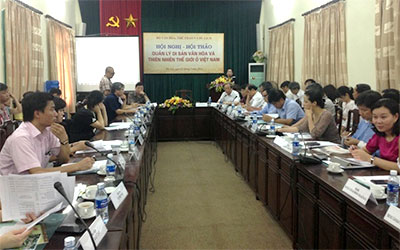World cultural and natural heritage sites in Viet Nam have made great contributions to socio-economic development, particularly in localities where the sites are located, experts agreed at a seminar on May 23 in Hanoi.

Nguyen Quoc Hung, Deputy Director of the Department for Heritage under the Ministry of Culture, Sports and Tourism, said such heritage sites constitute a major tourism resource.
He said while no official statistics are available, the recognition of a world heritage site is almost always followed by a fast increase in the number of tourists. According to UNESCO statistics, more than 1 billion tourists visit world natural and cultural heritage sites each year.
Viet Nam currently has seven world heritage sites, which are the complex of monuments in the ancient imperial city of Hue, Ha Long Bay, My Son Sanctuary, Hoi An ancient town, Phong Nha-Ke Bang National Park, the central sector of the Imperial Citadel of Thang Long – Hanoi and the Ho Dynasty Citadel.
Ha Long Bay and Hue welcome an average 2 million visitors each year now, while 1.5 million visited Hoi An last year. Other heritage sites also saw crowds of tourists, contributing to local development.
However, the rising number of visitors also poses threats to heritage sites in terms of environmental pollution. Ha Long Bay and the Hue monument complex were once put in the list of world heritage sites in danger. Hue was out of the list in 2013, while Ha Long Bay is under inspections by UNESCO experts in order to be considered for removing from the list this June.
The seminar also heard that Viet Nam has received substantial assistance from UNESCO and international organisations in preserving its world heritage sites.
However, experts noted that the country has not been able to get the community involve in conservation work. They called for appropriate policies to encourage all economic sectors, organisations and individuals to invest in this field.